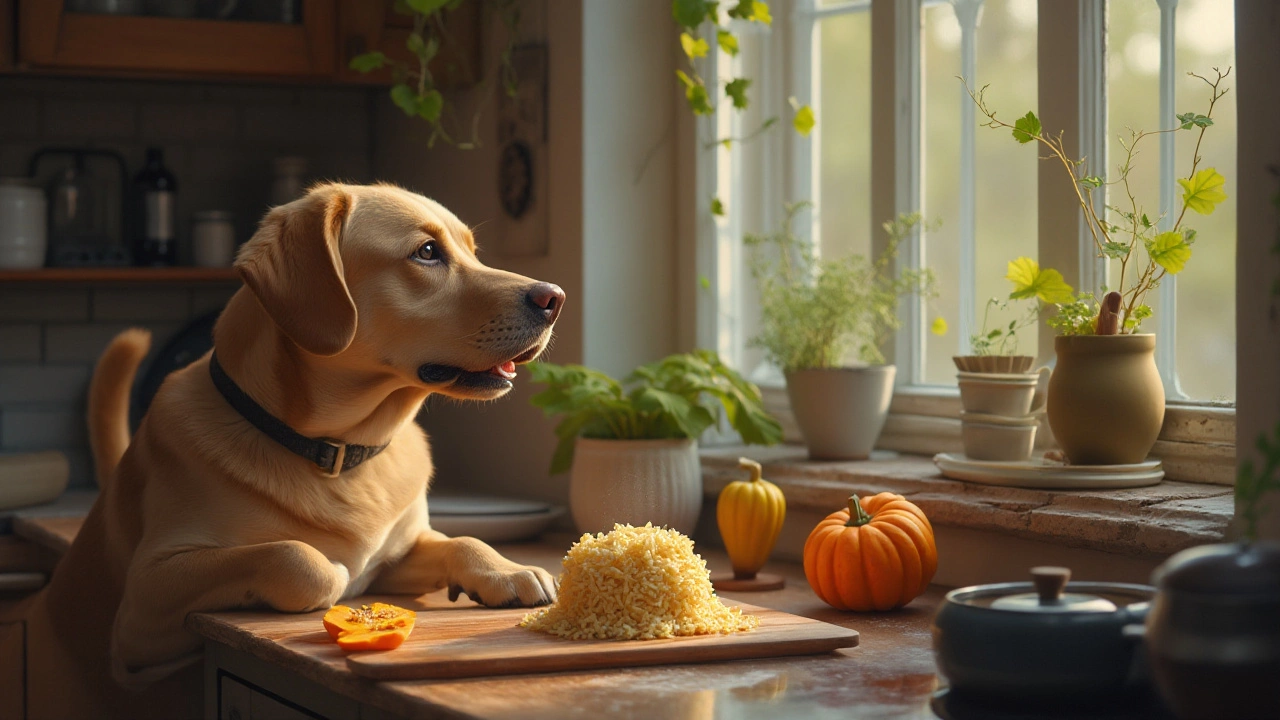Pumpkin for Dogs – The Simple Snack That Does More Than Taste Good
Pumpkin isn’t just a pretty fall decoration. For dogs it’s a low‑calorie, nutrient‑packed food that can help with digestion, weight control, and overall health. Most owners don’t realize that a handful of plain pumpkin can turn a picky eater into a happy, regular bow‑wagger.
What makes pumpkin so useful? It’s loaded with fiber, which keeps the gut moving smoothly, and vitamins A and C that support eye health and immune function. The beta‑carotene gives a natural boost to the coat, making it shinier. Plus, the antioxidants help fight inflammation without adding any artificial chemicals.
How much pumpkin should you give? A good rule of thumb is one teaspoon of pure pumpkin for every 10 lb of body weight, mixed into the regular meal. Larger dogs can handle a couple of tablespoons. Always start with a small amount and watch how your dog reacts before increasing the portion.
Beware of pumpkin products that contain added sugar, spices, or preservatives. Canned pumpkin pie filling is a big no‑no because of the sweeteners and spices that can upset a dog’s stomach. Stick to plain canned pumpkin (the kind that says ‘100 % pumpkin’ and nothing else) or fresh cooked pumpkin you’ve prepared yourself.
Serving ideas are endless and easy. You can steam or bake pumpkin chunks until soft, then mash them with a fork. Freeze small cubes for a cool summer treat, or stir a spoonful into dry kibble to add moisture and flavor. Dogs love the sweet, earthy taste, and you’ll love how simple it is to incorporate.
Easy Homemade Pumpkin Treat Recipes
Try this quick pumpkin‑and‑oat biscuit: combine 1 cup of oat flour, ½ cup of pure pumpkin, 1 egg, and a dash of cinnamon (optional). Mix into a dough, roll out, cut shapes, and bake at 180°C for 15‑20 minutes. The treats stay fresh for a week in the fridge and are perfect for training sessions.
When to Skip Pumpkin and What to Watch For
If your dog has diabetes, a history of pancreatitis, or is on a low‑carb diet, talk to your vet before adding pumpkin. Some dogs may be allergic to pumpkin or develop gas if given too much fiber at once. Signs of a bad reaction include vomiting, diarrhea, or excessive flatulence. If any of these occur, stop feeding pumpkin and consult your vet.
Overall, pumpkin is a safe, affordable, and tasty addition to most dogs’ diets. Start with a tiny spoonful, monitor your pup’s response, and gradually work it into meals or treats. Your dog will thank you with wagging tails and a healthier gut.

Pumpkin vs Rice: Which Is Better for Dogs with Diarrhea?
Choosing the right food for dogs with diarrhea can be crucial in aiding their recovery. This article explores the benefits of pumpkin and rice, two popular remedies, offering insights on their nutritional value and how they help with digestion. You'll find tips on preparing these foods for your furry friend and which option might suit your dog's specific needs best. With easy-to-digest advice and interesting facts, pet owners can make informed decisions when dealing with their dog's digestive troubles.
View more